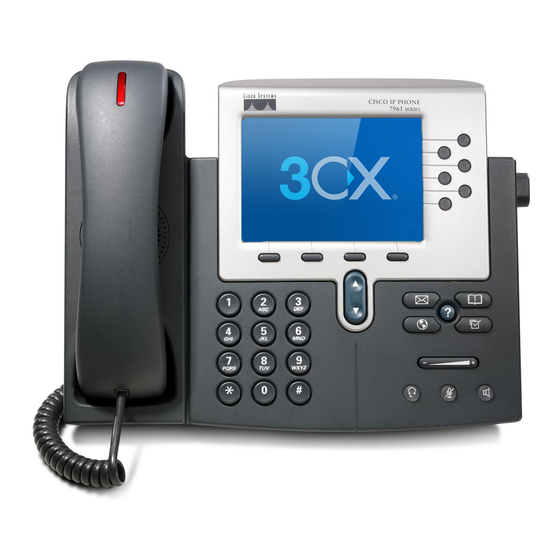Cisco Unified IP Phones and Your Network
In addition to assigning an IP address, the DHCP server directs the Cisco Unified IP Phone to a TFTP Server.
If the phone has a statically defined IP address, you must configure the TFTP server locally on the phone; the
phone then contacts the TFTP server directly.
Note
Step 6
Request the CTL file
The TFTP server stores the certificate trust list (CTL) file. This file contains the certificates necessary for
establishing a secure connection between the phone and Cisco Unified Communications Manager.
For more information, see Cisco Unified Communications Manager Security Guide, "Configuring the Cisco
CTL Client" chapter.
Step 7
Request the ITL file.
The phone requests the ITL file after it requests the CTL file. The ITL file contains the certificates of the
entities that the phone can trust. The certificates are used for authenticating a secure connection with the
servers or authenticating a digital signature signed by the servers.
For more information, see Cisco Unified Communications Manager Security Guide, "Security by Default"
chapter.
Step 8
Request the configuration file
The TFTP server has configuration files, which define parameters for connecting to Cisco
Unified Communications Manager and other information for the phone.
Step 9
Contact Cisco Unified Communications Manager
The configuration file defines how the Cisco Unified IP Phone communicates with Cisco Unified
Communications Manager and provides a phone with its load ID. After obtaining the file from the TFTP
server, the phone attempts to make a connection to the highest priority Cisco Unified Communications Manager
on the list. When security is implemented, if the security profile of the phone is configured for secure signaling
(encrypted or authenticated), and the Cisco Unified Communications Manager is set to secure mode, the phone
makes a TLS connection. Otherwise, it makes a nonsecure TCP connection.
If the phone was manually added to the database, Cisco Unified Communications Manager identifies the
phone. If the phone was not manually added to the database and auto-registration is enabled in Cisco Unified
Communications Manager, the phone attempts to auto-register itself in the Cisco Unified Communications
Manager database.
Note
Related Topics
Startup Problems
Network Configuration Menu
Cisco Unified Communications Manager Phone Addition Methods, on page 8
You can also assign an alternative TFTP server to use instead of the one assigned by DHCP.
Autoregistration is disabled when you configure the CTL client. In this case, the phone must be
manually added to the Cisco Unified Communications Manager database.
Cisco Unified IP Phone 7941G, 7941G-GE, 7942G, 7961G, 7961G-GE, and 7962G Administration Guide for Cisco Unified
Phone Startup Process
Communications Manager 9.0 (SCCP and SIP)
7

